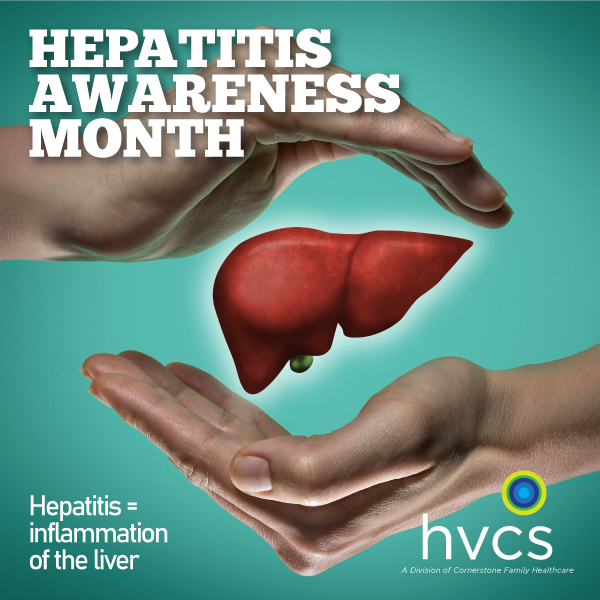
Posts Tagged ‘Hepatitis C’
May is Hepatitis Awareness Month
Tuesday, May 2nd, 2017May is Hepatitis Awareness Month
Tuesday, May 2nd, 2017
May is Hepatitis Awareness Month
Tuesday, May 2nd, 2017
Hepatitis Testing Day
Wednesday, January 4th, 2017
Hepatitis Testing Day
May 19
The Action Plan for the Prevention, Care, and Treatment of Viral Hepatitis designates May 19 as Hepatitis Testing Day.
Hepatitis Testing Day falls during May’s observance of Hepatitis Awareness Month.
Hepatitis Testing Day
Wednesday, January 4th, 2017
Hepatitis Testing Day
May 19
The Action Plan for the Prevention, Care, and Treatment of Viral Hepatitis designates May 19 as Hepatitis Testing Day.
Hepatitis Testing Day falls during May’s observance of Hepatitis Awareness Month.
Hepatitis Testing Day
Wednesday, January 4th, 2017
Hepatitis Testing Day
May 19
The Action Plan for the Prevention, Care, and Treatment of Viral Hepatitis designates May 19 as Hepatitis Testing Day.
Hepatitis Testing Day falls during May’s observance of Hepatitis Awareness Month.
Hepatitis Testing Day
Wednesday, January 4th, 2017
Hepatitis Testing Day
May 19
The Action Plan for the Prevention, Care, and Treatment of Viral Hepatitis designates May 19 as Hepatitis Testing Day.
Hepatitis Testing Day falls during May’s observance of Hepatitis Awareness Month.
Hepatitis Testing Day
Wednesday, January 4th, 2017
Hepatitis Testing Day
May 19
The Action Plan for the Prevention, Care, and Treatment of Viral Hepatitis designates May 19 as Hepatitis Testing Day.
Hepatitis Testing Day falls during May’s observance of Hepatitis Awareness Month.
World Hepatitis Day
Thursday, July 28th, 2016July 28th is World Hepatitis Day, a day to raise awareness about the prevalence of hepatitis and its impact on health, healthcare and patient’s lives.
From HepMag.com:
As with so many diseases, we’ve come a long way in understanding hepatitis, notably two chronic and serious forms: hepatitis B and hepatitis C. Several drugs are now on the market to manage hepatitis B, and a growing number of agents are becoming available to potentially cure hepatitis C. At the same time, we’re continually learning how to use approved medications much more easily and effectively.
But first, some basics.
The liver is the largest organ inside the human body. About the size of a football, it is located in the upper right part of the abdomen.
We can’t live without a functioning liver. It’s the body’s filter and warehouse. Almost all cells and tissues in the body depend on the liver. When something goes wrong with the liver, it can have a serious effect on almost every other organ in the body.
A little more than 1.5 quarts of blood pump through the liver every minute, allowing the liver to quickly and effectively remove toxins and waste products from the bloodstream. At the same time, the liver stores important nutrients such as vitamins, minerals and iron. The liver also plays a role in managing levels of certain substances in the body, such as cholesterol, hormones and sugars, which are all necessary for survival and are potentially harmful when out of balance. The liver also has a key role in digesting food because if produces bile. In addition, the liver controls blood-clotting factors, which prevent excessive bleeding.
Hepatitis is a general term that means inflammation of the liver. The Ancient Greek word hepa refers to the liver, and itis means inflammation (as in arthritis, dermatitis and pancreatitis).
Inflammation of the liver—hepatitis—has several possible causes, including:
- Toxins and chemicals such as excessive amounts of alcohol
- Autoimmune diseases that cause the immune system to attack healthy tissues in the body
- Fat which may cause fatty liver disease
- Microorganisms, including viruses
Hepatitis A virus (HAV), hepatitis B virus (HBV) and hepatitis C virus (HCV) infect liver cells—called hepatocytes—that provide the best conditions for these viruses to reproduce. In response to the infection, the body’s immune system targets the liver, causing inflammation (hepatitis). If the hepatitis is severe (which can happen with HAV and HBV) or goes on for a long period of time (which can happen with HBV and HCV), hardened fibers can develop in the liver, a condition called fibrosis.
Over time, more and more normal liver tissue can be replaced by hardened scar tissue, which can obstruct the normal flow of blood through the liver and seriously affect its structure and ability to function properly. This is called cirrhosis. If the liver is severely damaged, blood can back up into the spleen and the intestines, which can result in high pressure in these organs. Consequences of this condition—called portal hypertension—include bleeding (variceal bleeding) and fluid in the abdomen (ascites). Significant liver damage can also reduce the production of bile needed for proper digestion, and it can decrease the liver’s ability to store and process nutrients needed for survival. Other effects of a damaged liver include the inability to remove toxins from the bloodstream, which can eventually lead to mental confusion and even coma (hepatic encephalopathy).
There are five viruses known to affect the liver and cause hepatitis: HAV, HBV, HCV, the delta hepatitis virus (HDV, which only causes problems for people infected with HBV) and hepatitis E virus (HEV).
Hepatitis C Cure: New Treatments & Breakthroughs – Half-Day Forum
Wednesday, April 20th, 2016The National AIDS Treatment Advocacy Project (NATAP) sponsors a half-day forum called “Hepatitis C Cure: New Treatments & Breakthroughs” on Saturday, June 11, 2016 at Weill Cornell Medical College’s Uris Auditorium. Dr. Ira Jacobson and Dr. Kristen Marks will present.
2.8 Nursing CEU & 4.5 CASAC hours available.
To attend, contact NATAP at (888) 266-2827 or at register@natap.org.

